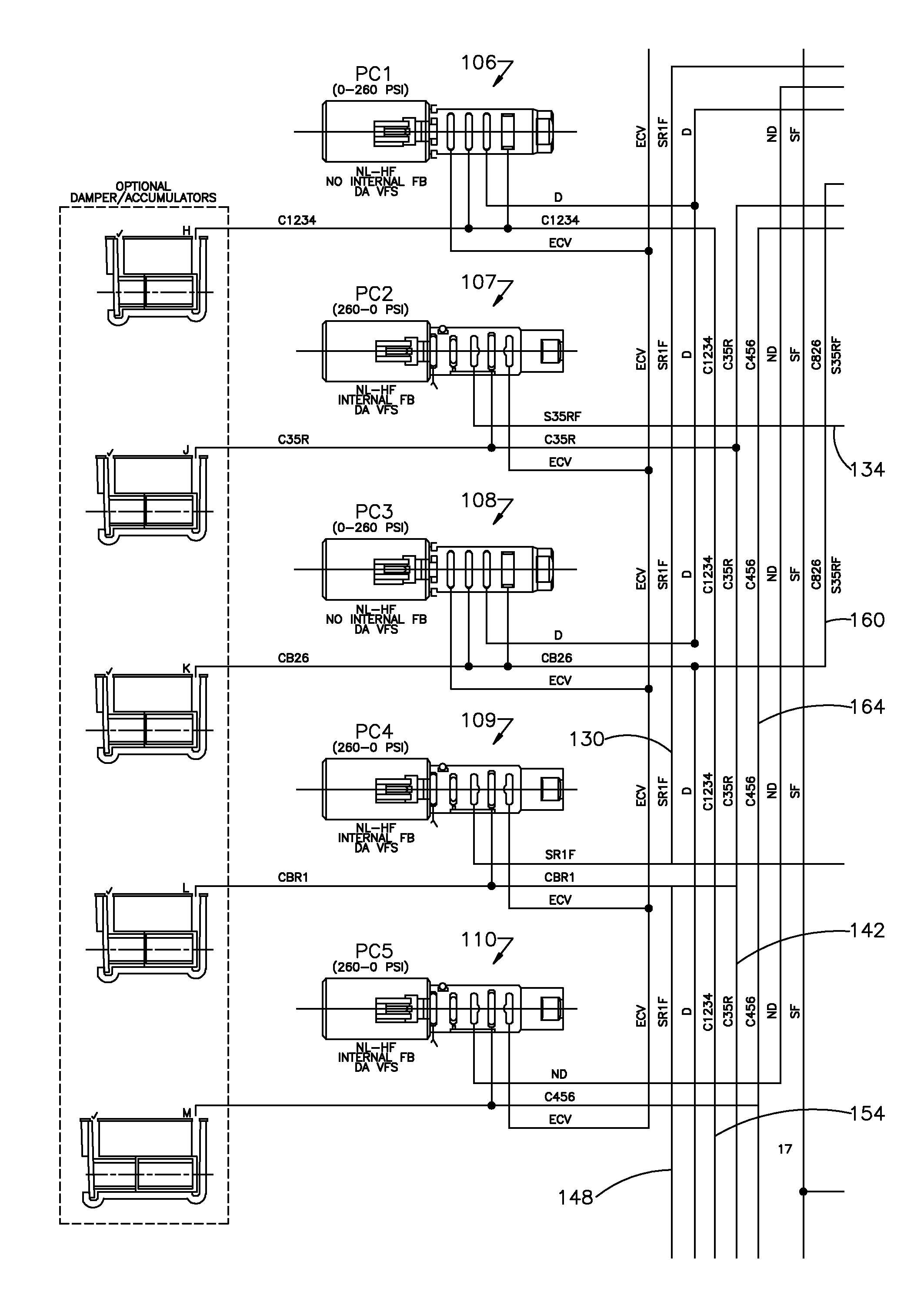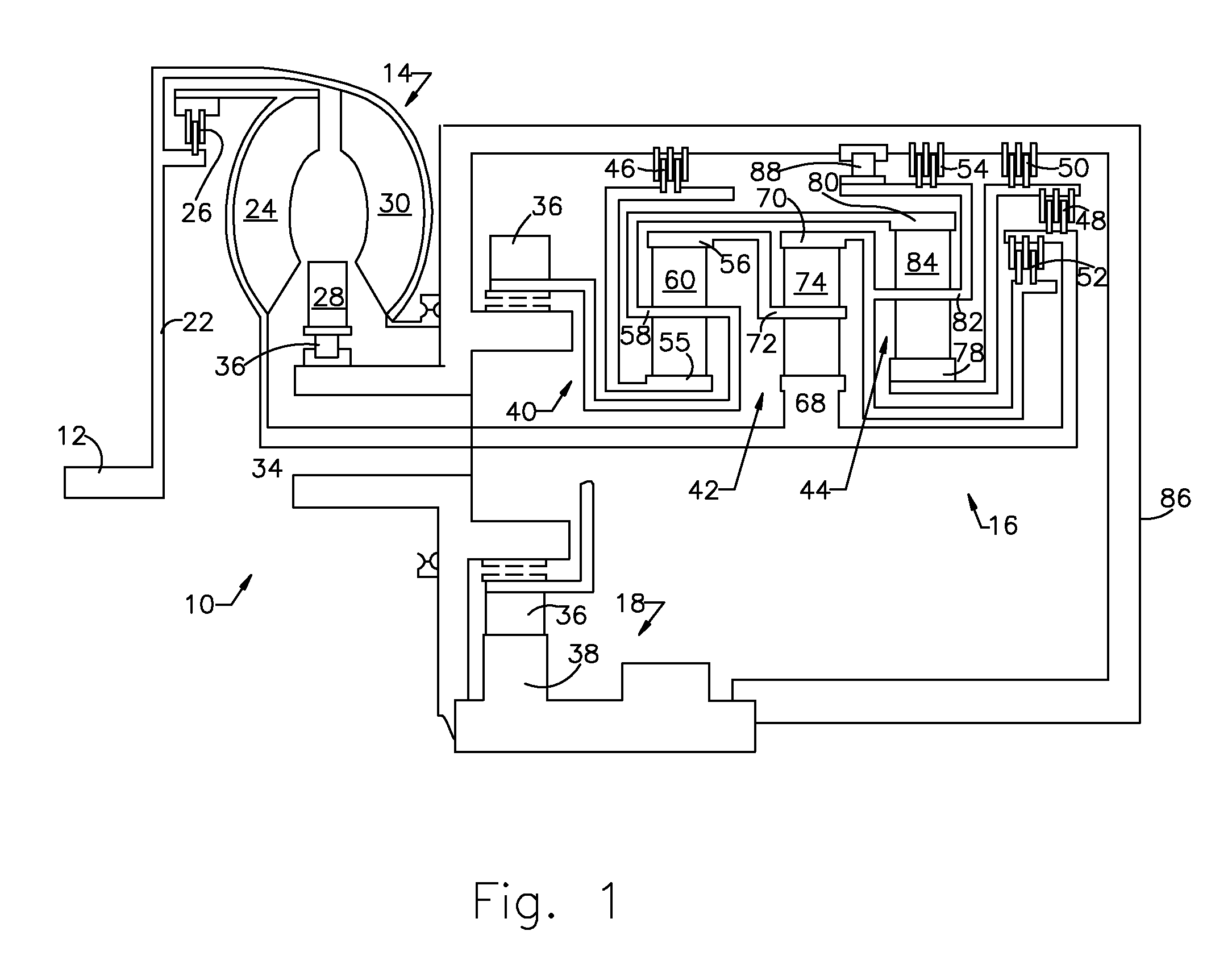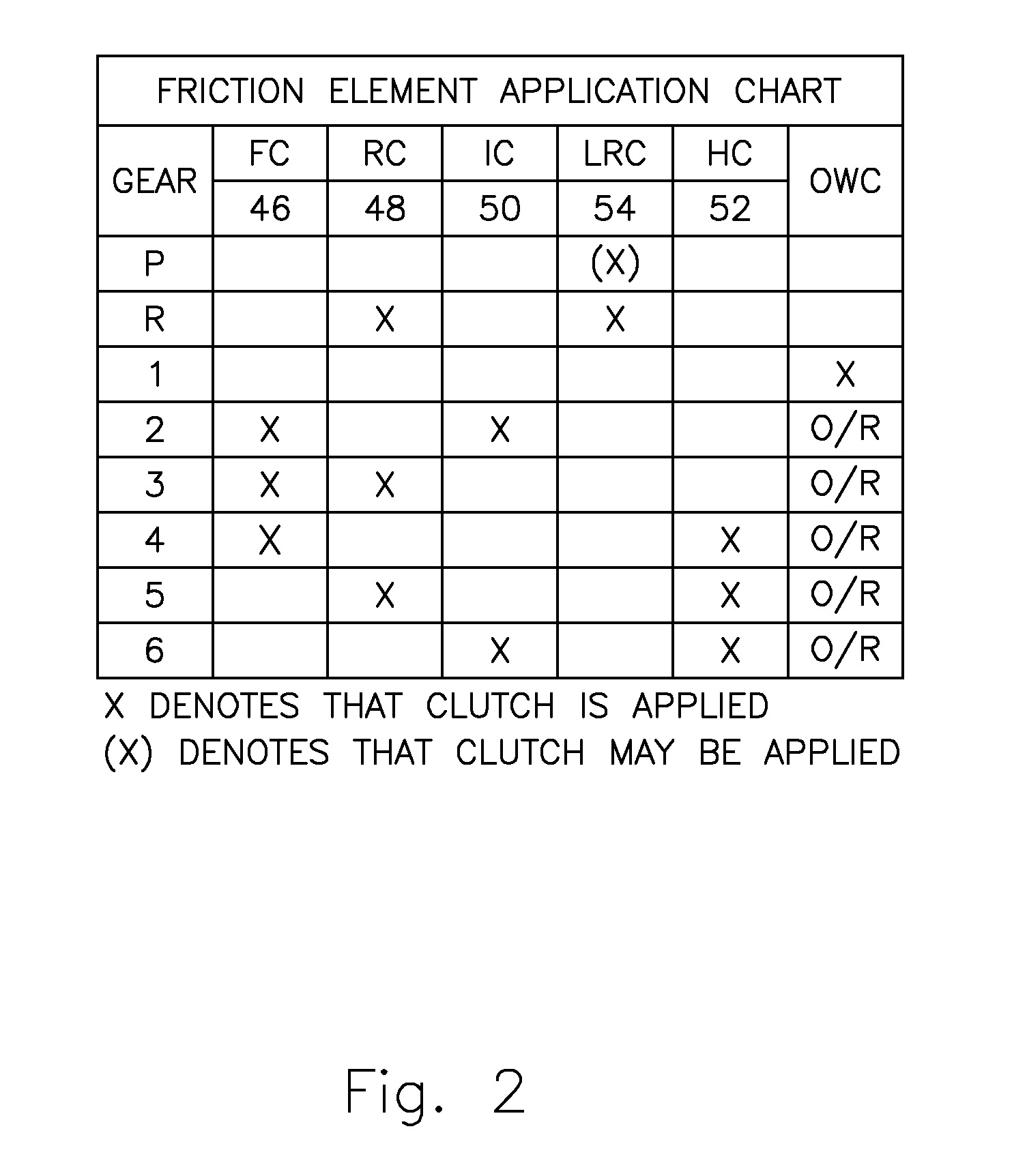Control for an Automatic Transmission
a technology of automatic transmission and control panel, which is applied in the direction of mechanical equipment, propulsion parts, transportation and packaging, etc., can solve the problems of increasing cost and size, delay, and delay temperature sensitive, and achieves the reduction of delay and sensitivities, reducing valve body height, and small space
- Summary
- Abstract
- Description
- Claims
- Application Information
AI Technical Summary
Benefits of technology
Problems solved by technology
Method used
Image
Examples
Embodiment Construction
[0021]Referring now to the drawings, there is illustrated in FIG. 1 the powertrain 10 for a motor vehicle, which includes an engine 12, torque converter 14, transmission 16, and an output drive mechanism 18. The engine 12 is an internal combustion engine well known to those skilled in the art. The torque converter 14 includes having an impeller 30 connected through an input shell and flex plate 22 with the crankshaft of the engine 12, a turbine 24, friction clutch 26, and a stator 28, which is grounded through a one-way clutch 36. The turbine 24 and clutch 26 are driveably connected to a transmission input shaft 34. The output drive mechanism 18 includes meshing output gears 36 and 38.
[0022]The transmission 16 includes three planetary gearsets 40, 42, 44, and five friction control elements, which are torque-transmitting clutches and brakes 46, 48, 50, 52, and 54.
[0023]Gearset 40 includes a sun gear 55, ring gear 56, and planet carrier 58, which is comprised of a plurality of planet ...
PUM
 Login to View More
Login to View More Abstract
Description
Claims
Application Information
 Login to View More
Login to View More - R&D Engineer
- R&D Manager
- IP Professional
- Industry Leading Data Capabilities
- Powerful AI technology
- Patent DNA Extraction
Browse by: Latest US Patents, China's latest patents, Technical Efficacy Thesaurus, Application Domain, Technology Topic, Popular Technical Reports.
© 2024 PatSnap. All rights reserved.Legal|Privacy policy|Modern Slavery Act Transparency Statement|Sitemap|About US| Contact US: help@patsnap.com










